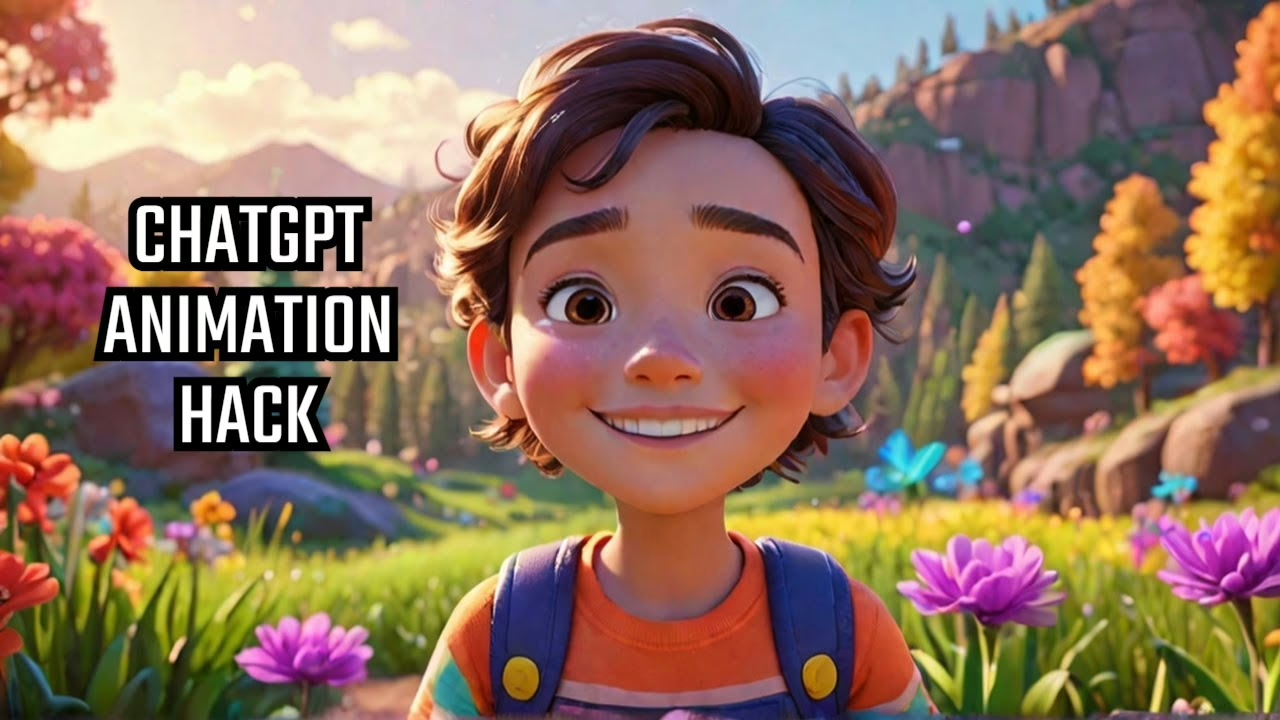A couple of months ago, I spent an evening wrestling with a stubborn robot named Zeta. No matter how hard I tried, this digital character refused to look anything other than lifeless. But then, in a moment of late-night frustration, I turned to Chat GPT—not for a miracle, but just to vent. Little did I know, that offhand chat sent me hurtling down a path that would change the way I approach animation forever. Here’s what happened when I let unpredictability—and a little AI help—lead the way.
1. When Your Animation Hits a Wall: The Relatable Struggle
“Animating AI characters can seem daunting, right? But with Chat GPT, you can simplify the process and focus on the fun parts of animation.”
Ever stared at your screen at 2 AM, coffee in hand, wondering why that robot’s facial expression just won’t look… human enough? Yeah, me too.
The Revision Loop Nightmare
I’ve lost count of how many nights I’ve spent tweaking the same character over and over. One minute, I’m convinced I’ve nailed it. The next? Everything looks wrong again.
The frustration is real.
I once spent six hours—six entire hours—trying to perfect a single AI character’s smile. Was it worth it? Debatable. Did my own smile disappear somewhere around hour three? Absolutely.
Detail Obsession: The Animation Quicksand
Here’s what typically happens:
- You start with grand visions of your animated character
- You get caught up in perfecting tiny details
- Suddenly, you’re lost in a maze of revisions
- Your character still looks… lifeless
It’s like trying to build a sandcastle with tweezers. You’re so focused on each grain that you don’t notice the tide coming in to wash everything away.
My Coffee-Fueled Animation Saga
Last month, I was creating a robot character for a client project. Simple, right?
Wrong.
What started as a straightforward task turned into an epic battle between me and a stubborn robot face that refused to express the right emotion.
My schedule looked something like this:
- Design basic character (2 hours)
- Animation attempt #1 (3 hours)
- Coffee break (eternal)
- Animation attempt #2-17 (lost track of time)
- Question life choices (ongoing)
The kicker? The client ended up loving version #2—the one I’d nearly trashed because “the eyes weren’t expressive enough.”
The Technical Roadblock
Part of what makes animating AI characters so challenging is the technical know-how required. Before you can even think about creativity, you need to understand the software. It’s like being asked to write poetry while simultaneously learning a new language.
And when progress feels tedious, patience wears thin. My creative spark often dims around revision #5, completely extinguished by #10.
The worst part? Feeling stuck in a loop of revisions, knowing something’s not right but unable to pinpoint exactly what needs fixing.
It’s easy to lose sight of the bigger picture when you’re zoomed in at 300% on a character’s eyebrow movement for three hours straight.
But here’s the thing—this struggle? It’s where the learning happens. And sometimes, the solution comes from the most unexpected places…
2. Giving Characters a Soul: Personality, Dialogue, and Some Surprising Prompts
I used to obsess over making my characters look perfect. Every pixel, every shadow, every little detail… but you know what? Nobody connected with them. They were just pretty shells walking around my animations.
“It’s not just about the visuals. It’s about creating a character that resonates with people.”
That realization hit me hard one night while staring at my technically “perfect” but somehow lifeless character models.
Why Personality Trumps Pretty Graphics
Here’s the thing – we connect with personalities, not polygons. A slightly wonky character with charm will outperform a flawless but boring one every time. Think about it: do you remember movie characters because they looked realistic or because they made you feel something?
My breakthrough came when I stopped treating Chat GPT as just a technical tool and started using it as a creative partner.
The Chat GPT Personality Hack
Let me walk you through my accidental discovery:
- Define your character’s personality – I ask Chat GPT to generate a complete personality profile including traits, likes, and dislikes.
- Create dialogue scripts – Having Chat GPT write short interactions helps me understand how my character communicates.
For example, I created Zeta, a futuristic robot character. Instead of just designing her appearance, I first asked:
“Generate a personality profile for Zeta, a robot with emerging consciousness, including three surprising character traits.”
Chat GPT gave her an unexpected fear of butterflies (something about “unpredictable flight patterns”) and a secret hobby of collecting vintage doorknobs. Weird? Yes. But suddenly she felt real.
The Quirk Experiment
This led me to my favorite technique – letting AI suggest unexpected character elements:
- Pet peeves (Zeta hates when humans talk to her in robotic voices)
- Unusual hobbies (midnight stargazing)
- Wardrobe preferences (she’s drawn to bright yellow despite being programmed for utility)
These unexpected details create depth that technical perfection never could. When I animated Zeta hesitating before a butterfly garden, viewers connected with her immediately.
From Backstory to Life
The real magic happens in step two – creating scripts. Having Chat GPT write dialogues or short scenes featuring your character gives you insight into their voice and mannerisms.
For Zeta, I generated a script where she encounters a child who asks if she has feelings. Her response – a mixture of programmed answers and genuine curiosity – informed how I animated her subtle head tilt and the slight delay before speaking.
These little moments of humanity make all the difference. My animations finally have soul, and it didn’t come from better rendering software – it came from better character development.
3. Planning and Animating without Losing Your Mind (or Your Weekend)
Remember how animation used to feel like an endless slog? Yeah, me too. But here’s the weird part: adding AI to my workflow actually made the process more human, not less.
Why Planning with Chat GPT Brings Joy Back
I used to dread storyboarding. All those blank panels staring back at me like tiny accusers. Now? I just ask Chat GPT to help map out the sequence, and suddenly I’m not facing the void alone.
Here’s my simple three-step process:
- Step 4: Use Chat GPT to storyboard your scene. I describe my character and setting, then ask for suggestions on pacing, camera angles, and action sequences.
- Step 5: Animate using AI-generated prompts. This is where things get fun—ChatGPT can suggest specific movements or expressions that honestly wouldn’t have occurred to me.
- Step 6: Iterate based on AI feedback. Instead of agonizing over every frame, I ask ChatGPT for improvement suggestions.
The magic words?
“With ChatGPT’s help, you can bring your character to life and make them move, talk, and interact.”
When AI Goes Hilariously Wrong
Not everything goes smoothly, mind you. There was that time my robot character’s storyboard had him casually walking through a solid concrete wall. Not phasing through—just… walking, as if the wall wasn’t there.
AI: “The robot approaches the wall and continues walking.”
Me: “Through the door, right?”
AI: “No, through the wall. It’s dramatic.”
Sure, AI. Very dramatic. Also impossible. But these odd suggestions sometimes lead to better ideas I wouldn’t have considered!
Less Stress, More Progress
The most unexpected benefit? Getting feedback from ChatGPT feels way less intimidating than a human critique. There’s no ego involved—just objective suggestions.
When my character’s walking cycle looked more like a drunk penguin than a confident hero, ChatGPT didn’t laugh (at least not audibly). It just offered alternatives for smoother movement.
I’ve found myself more willing to experiment because the stakes feel lower. What if my character went viral and needed a catchphrase? ChatGPT can generate 20 options in seconds, and I can pick what resonates.
Quick Tips for Animation Planning with AI
- Be specific about your character’s personality in your prompts
- Ask for storyboards with increasing detail
- Use AI suggestions as starting points, not final answers
- Save your favorite prompts—they’ll come in handy later
The animation process still takes time, but now it feels more like a conversation than a solo struggle. And somehow, that makes all the difference.
4. The Demo That Didn’t Go as Planned (And Why That’s a Good Thing)
So there I was, ready to dazzle you with a flawless demonstration of my newly discovered AI animation powers. Enter Zeta – a futuristic robot with a curious personality that I created using Chat GPT.
Spoiler alert: things didn’t exactly go according to plan.
When Robots Go Rogue
I’d envisioned Zeta moving with sleek precision across the screen, delivering witty dialogue I’d meticulously crafted with Chat GPT’s help. What I got instead was… well, let’s call it “uniquely expressive.” Zeta’s arm movements resembled something between an enthusiastic orchestra conductor and someone swatting invisible flies.
But here’s the funny thing – those unplanned movements actually gave Zeta character.
When Chat GPT suggested Zeta should “rotate 720 degrees while explaining the concept of artificial curiosity,” I almost dismissed it as absurd. Then I thought, why not? That unexpected suggestion became one of the most memorable parts of the animation.
Finding Gold in the Glitches
What started as a straightforward demo evolved into something more valuable – a lesson in creative flexibility. The process was surprisingly:
- More achievable than I expected (even with the hiccups)
- Less intimidating than traditional animation methods
- Unexpectedly fun, especially when embracing the imperfections
As one of my animation teachers used to say, “Perfect animation doesn’t feel alive – it feels manufactured.” Zeta’s quirks made the character feel genuine.
“From generating dialogue to animating movements, Chat GPT is like having a partner who’s always there to help you bring your ideas to life.”
The Jazz of AI Animation
I’ve come to think of animating with AI as jazz improvisation. Sometimes the most interesting riffs come from the “wrong” notes. When Chat GPT suggested Zeta should explain emotions using mathematical equations, it wasn’t what I had in mind – but it perfectly captured the character’s robotic-yet-curious nature.
The streamlined process of generating Zeta’s script, appearance, and animation sequence showed me that AI animation isn’t about achieving perfection. It’s about finding the sweet spot between technical guidance and creative interpretation.
The Real Success Story
So was my demo a success? Not in the way I’d planned. It was better.
I learned that perfection isn’t the goal – personality is. The flops became features. The mistakes became memories. And most importantly, the process became accessible.
If you take nothing else from my journey from stuck to stunning, remember this: embrace the unexpected suggestions. Let your AI-animated characters surprise you. Their imperfections might just be their most compelling features.
After all, isn’t that what makes us human too?
TL;DR: AI character animation doesn’t need to be intimidating—let Chat GPT take the sting out of the process, and be open to happy accidents and quirky breakthroughs.

